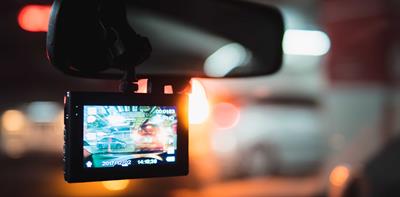
You buy a second-hand Ford Fiesta. A nice little runner at a decent price that you pick up from a house in Birmingham. Everything seems legit.
What you don’t realise, not least because you ran a background check online, is that the car is actually a stolen vehicle. Its identity has been copied from a car owned by somebody else miles away, in Scotland.
You’ve become the latest victim of ‘car cloning’ and will lose the vehicle and potentially the money you paid for it.
How car cloning works
A cloned car is a vehicle that has been given a new identity - such as happened in the Ford Fiesta example, a real case from earlier this year.
Criminals find an exact match of a car they have stolen - with the same make, model and colour - and copy the identity of the legitimate vehicle.
To make the vehicle they have stolen appear legal, they’ll put on false number plates. They may also use a duplicate or stolen V5C logbook. This is a document issued by the Driver and Vehicle Licensing Agency (DVLA) which would normally be your proof of ownership. Finally, they may change the vehicle identification number (VIN), which is intended to serve as the vehicle’s unique fingerprint, and is normally found on the driver's side at the corner of the dashboard where it meets the windshield, or by driver's side door post.
With such sophisticated techniques used by fraudsters, it means that even if the buyer runs an online background check on the car, then the details may appear to be in order
As well as hiding the true identity of a stolen vehicle, criminals also use cloning to avoid paying charges such as parking tickets and speeding fines, which would instead be sent to the owner of the vehicle whose identity they’ve stolen.
Car cloning is sadly a common problem. One in 12 cars on UK roads could have cloned registration plates, research by the International Association of Auto Theft Investigators (IAATI) showed in 2016.
A new trick
One tip often given to help people avoid falling for a cloned car scam is to only buy a car from the address shown in the vehicle’s V5C logbook.
However, some cars are now being sold from the driveway of the address shown on a forged V5 logbook so that everything looks genuine.
Commenting on one such case, James Babington from the Ageas Counter Fraud Team says:
“This was a really sophisticated fraud where the car buyer was actually invited into what appeared to be the fraudster’s home to complete the sale. Unfortunately the V5C logbook was forged and the vehicle stolen. The buyer only realised that something was amiss when the car was stolen a few weeks later and the residents at the address the car had been bought from denied all knowledge of the sale.”
So what can you do to avoid handing over your hard-earned cash to fraudsters? Mark Silvester, West Midlands Police crime prevention manager, has the following advice:
- Is the vehicle a bargain? If it’s less than 30% below the normal asking price then it’s probably too good to be true.
- Don’t pay in cash. Paying by Bank Transfer will help the Police trace the fraudster if the vehicle turns out to be cloned.
- When looking over the car check the VIN plate. If it looks like it’s been tampered with in any way, then walk away.
- The VIN may also be etched on the windscreen and other windows in the car. Have a good look to see if these numbers match your paperwork or have been tampered with.
- Look closely at the V5C registration document (logbook). Genuine documents should have a DVLA watermark running through them.
- Does the seller have paperwork for the vehicle like the service history or receipts for work? Are these receipts in the seller’s name?
- Make sure you collect all the vehicle keys from the seller.
If you think you have already become the victim of car cloning, then contact the police immediately.
No £25 admin fee
When you update your policy online, e.g. amend driver, address or car details.
